The lowdown on Nan, Lampang and Pai – three of Northern Thailand’s lesser-known gems
Khiri Stories: Hidden Gems of Northern Thailand
There’s more to Thailand’s north than Chiang Mai and Chiang Rai. Our roving Marketing Manager Tim Russell did an epic North Thailand road trip recently – here are his tips for diving deeper into this beautiful region, accompanied by his photos.
FOR MOST visitors to the country, Northern Thailand means Chiang Mai and/or Chiang Rai, and if you only have limited time here then that’s fair enough – both destinations offer the classic mix of typical northern experiences such as mountains, elephants, hilltribes, temples and robust, spicy curries.
But there is far more to the north than its two most popular destinations, and travellers who stay longer in the region and go beyond the usual tourist trail are rewarded with spectacular scenery, authentic hilltribe villages, scenic (and often deserted) mountain roads, and a whole lot more.
Accompanied by our trusty Mazda, a few months ago my wife and I set off for an epic ten-day tour of the far north, armed with walking shoes for a bit of hiking, hoodies for those cold mountain nights, and a veritable arsenal of camera gear, to hit the road less travelled and experience some of the north’s lesser known destinations. Here’s my account of the three places we visited.
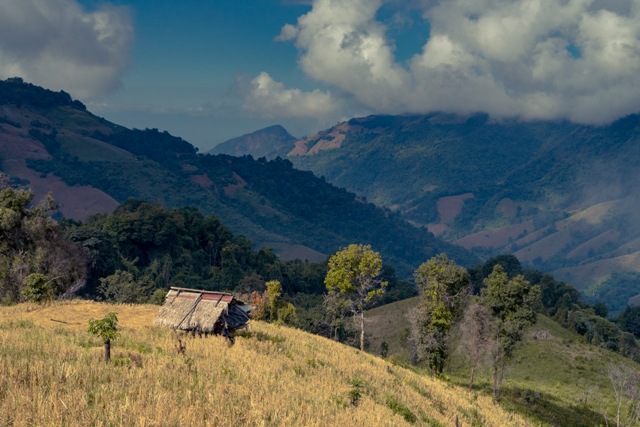
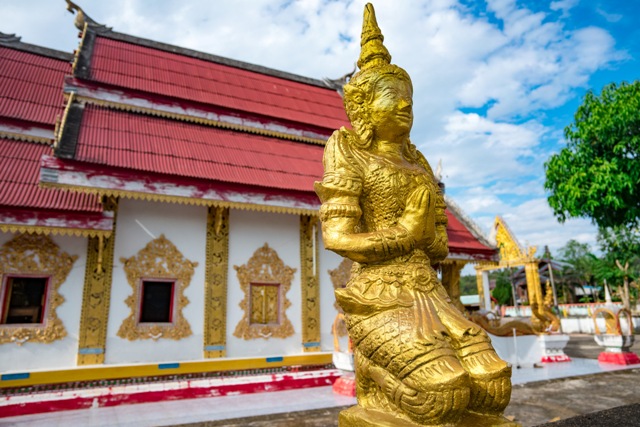
The Ascent of Nan
For years I’d listened to friends telling me that Nan was Thailand’s most beautiful province, so when we were planning our itinerary it was the first name on our list. Located along the Lao border, Nan is Thailand’s 11th biggest province and, remarkably, 61% of it is covered by forest, making it a popular destination for domestic tourists, who make up 97% of the province’s roughly 2m annual visitors – foreign tourists are, as we would discover, a very rare sight indeed.
Our stay in Nan begins in the district of Pua, home to Doi Phu Kha, the biggest of Nan’s nine national parks and a paradise for motorcyclists and landscape photographers. We check into one of the region’s growing number of farmstays, spending the night in a basic-but-charming bamboo cottage on the edge of a rice paddy, where we are served delicious home-cooked local food out on our small terrace, under a beautifully clear, starlit sky.
Nan Town
We take our first full day fairly easy after the previous day’s long drive from Bangkok, beginning the day with a scenic drive down into Nan town, the provincial capital. It’s a charming small town, home to just 20,000, and a lovely spot for half a day’s wandering. The main attraction is historic Wat Phumin, a temple dating from the 16th century and built to look as if it is being carried on the backs of two huge snakes (or Nagas).
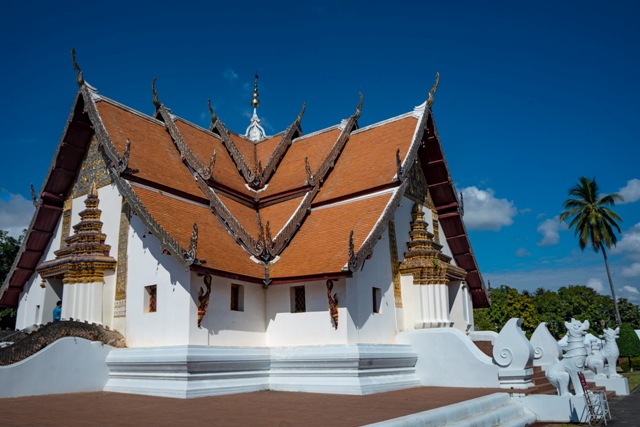
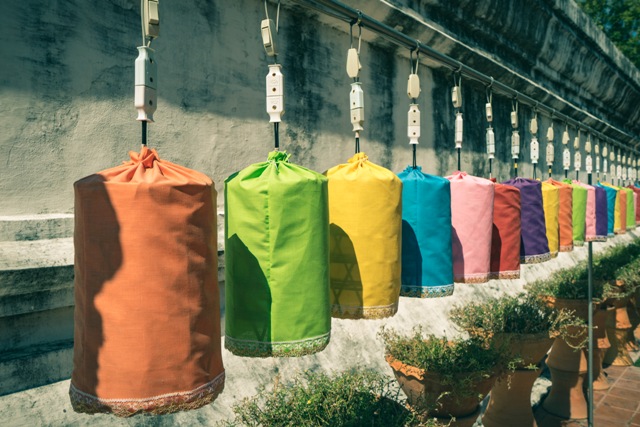
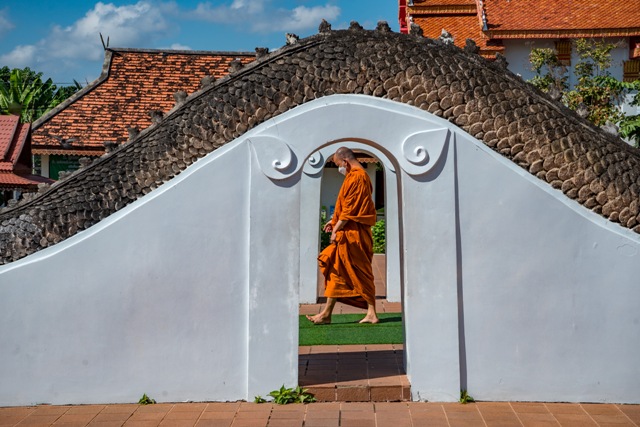
Wat Phumin is most famous for its 19th-century murals, which depict the local life of the time, and one of which – a man whispering presumably sweet nothings into the ear of a woman – has become the town’s symbol, recreated on everything from t-shirts to rice bowls.
Lunch? No debate. If there’s one dish that sums up Northern Thailand for me then it’s khao soy – a spicy curry soup containing egg noodles and stewed chicken or beef, topped with crispy noodles, limes and picked vegetables. A riot of flavours and textures in one bowl, and something I could happily eat – and have happily eaten – for breakfast, lunch and dinner. There are a couple of excellent khao soy joints just around the corner from Wat Phumin and I delightedly tuck in to two bowls of the stuff.
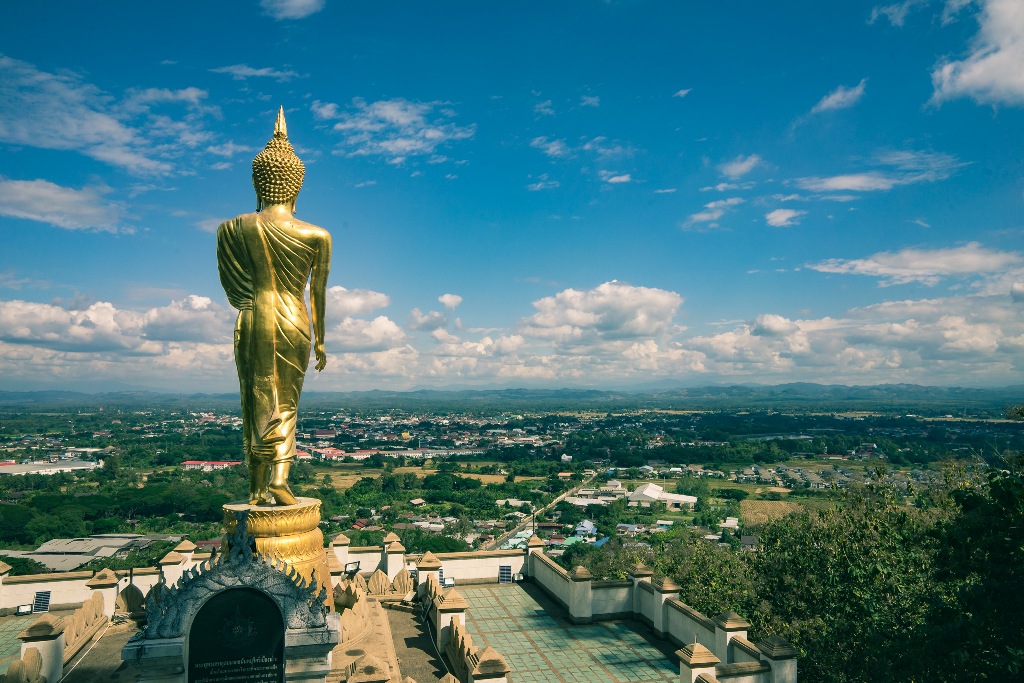
The other must-see in Nan is another temple, Wat Phra That Kao Noi, which is located on top of Doi Khao Noi mountain just outside the town. It’s a classic Thai hilltop temple, similar to the famous Wat Suthep in Chiang Mai only without the crowds, and it offers spectacular views of the surrounding countryside. Built in the 15th century, it also allegedly houses one of the Buddha’s hairs, as well as a huge golden walking Buddha statue that can be seen from miles around.
In the Clouds (Part 1)
One of the biggest draws for visitors to this part of Thailand – particularly the country’s army of Instagrammers – is the low-lying cloud that settles in the numerous valleys as the sun rises each day. So the following day we’re up at 5am to drive north to the neighbouring province of Phayao, in particular Phu Langka Forest Park, which boasts a renowned cloud viewing spot. There are also a couple of resorts and homestays there, but they’d long since been booked out when we were planning our trip.
Once the sun comes up, the drive over the mountains is truly spectacular, immaculate tarmac roads with frequent viewing points and, at such an early hour, much-needed coffee stops. To be honest the cloud viewing en route is stunning in itself, which is just as well because by the time we reach Phu Langka the clouds have already dispersed. But it’s still a beautiful place, with several charming cafes and restaurants overlooking a green valley, and we happily while away a couple of hours there just taking in the amazing views.
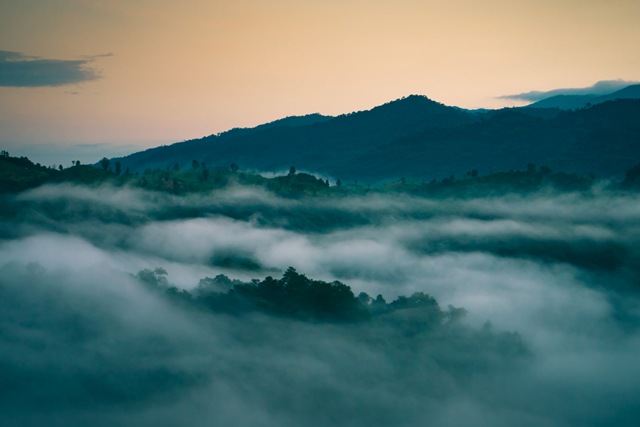

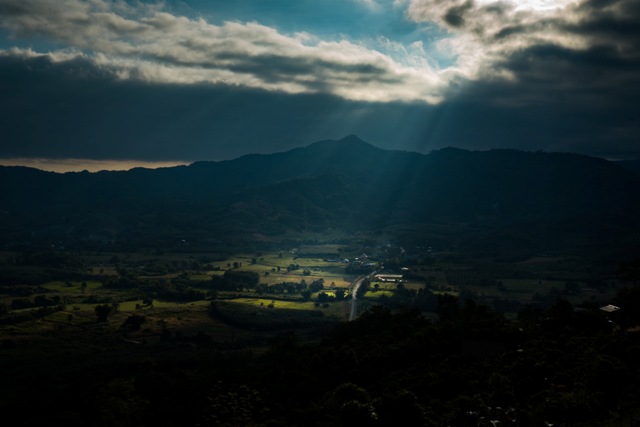
An Immersive Hilltribe Experience
The following day we check out of our farmstay early to begin the most adventurous leg of the trip, heading out to Bo Kluea district, an area of Nan that rubs right up against the border with Laos, where we’ll be amongst the first guests to sample an overnight stay at a new hilltribe homestay initiative.
It’s another visually stunning drive, mostly through Doi Phu Kha National Park, before we arrive in the small town of Sapan, nestled in an awe-inspiring valley and home to a range of charming guesthouses, resorts, campsites and homestays along the banks of the Pan river. We’ve time for a quick rest stop before our driver meets us to take us up the mountain to Ban Huai Thon, the village where we’ll be spending the night.
If we’d been puzzled as to why we had to leave our car in the valley and be driven up to the village, we soon realise why, as whilst the distance is only 8km, the ‘road’, if it can even be described as such, is so bad the journey takes over an hour. The road is mostly dirt track, heavily pitted, and only negotiable using a 4×4 with a driver who knows every inch of it (the following morning we meet a motorbike driver who insisted on driving up himself, only to fall off, break his arm and have to be driven back down to the nearest hospital).
Whilst for us the journey is an amazing experience, for the locals it’s a massive inconvenience, with Sapan being home to the nearest schools, markets and doctors. The result is that many of the kids in Ban Huai Thon go to school sporadically if at all, and that in turn is a driving factor behind the villagers offering accommodation: with the local government unwilling to build them a road, they’ve decided to do it themselves, and are raising funds by opening several village houses as homestays. They’ve just started the project the week we arrive and we are delighted to be the first foreign guests!
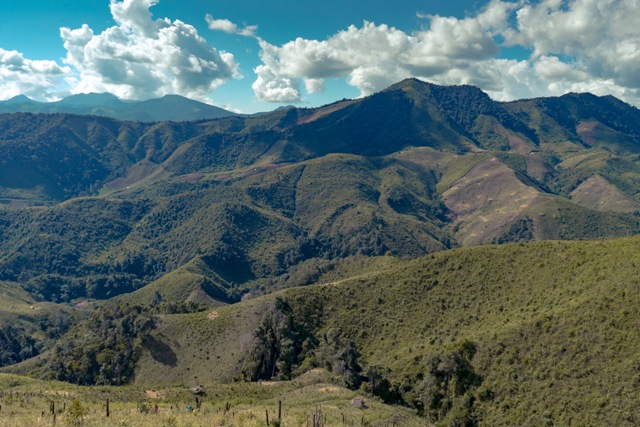
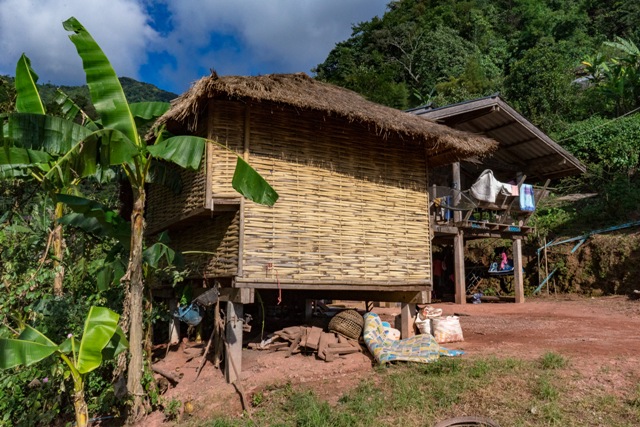

Our home for the night is a typical Thai hilltribe house – wooden, sitting on pillars with a bathroom and cooking area under the house. It’s very basic but absolutely delightful, with an outdoor area festooned with cushions and offering fine views of the approaching sunset. We remain there for the next few hours, being served fantastic local food and sipping plenty of cold beer – which, given that the temperature plummets overnight and our bathroom is outside, will turn out to be a big mistake.
The villagers – and their livestock – get up with the sunrise the next day, and so do we, as they have something special in store for us. Our driver picks us up and drives us even further up the mountain to the optimum cloud viewing point, and we get a stunning view of the cloud settled in the valley below, accompanied by hot local coffee, before we say goodbye to our hosts and head back to Sapan and our car.
From Sapan it’s a short drive to the nearest ‘big’ town (in this case, one main street) in the area, Bo Kluea. It’s a charming place, with the Pan river running through it, some excellent coffee shops, and a traditional salt factory which sells various salt-related products. And then it’s farewell to Nan, as we hit the road to our next destination, the city of Lampang.
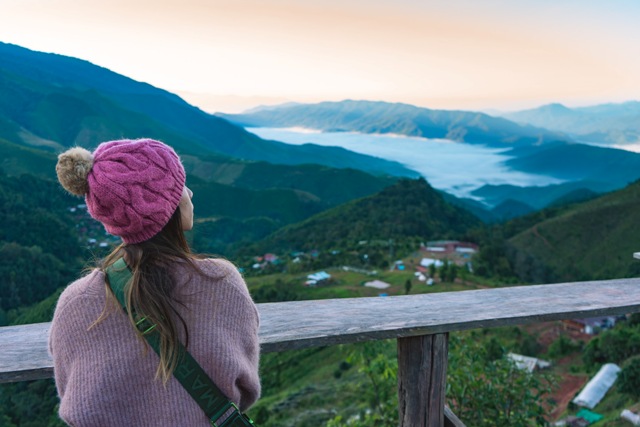
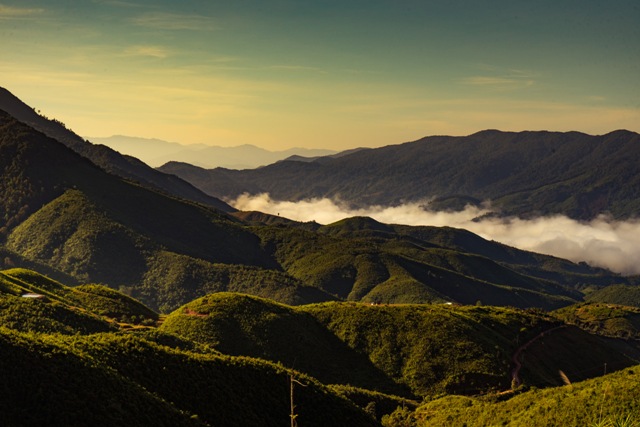
Luxury in Lampang
After a few nights in rather basic accommodation, we’ve decided to use Lampang as a mid-trip oasis of comfort for a couple of nights, staying in a nice 4* hotel and eating Japanese food the first night, pizza the second. Much as we love Thai food, variety is the spice of life and we need a change.
Lampang is a decent sized city with a population of around 60,000, and is a very enjoyable place to spend a couple of nights, though with COVID measures still in place when we visit its famous horse carts are absent and everything is closed by 8pm, so we probably don’t see the city at its best.
Our main reason for stopping here is the spectacular Wat Chalermprakiat, an incredible temple sitting on a mountaintop with white stupas which can be seen for miles around. It’s about an hour’s drive from Lampang, and when you arrive a shuttle bus takes up close to the top of the mountain, from where it’s a fairly strenuous 30-minute climb up wooden staircases to get to the top. But it’s well worth it, as the sight of the numerous stupas perched on the mountaintop, and the views of the surrounding landscapes, are absolutely breathtaking.
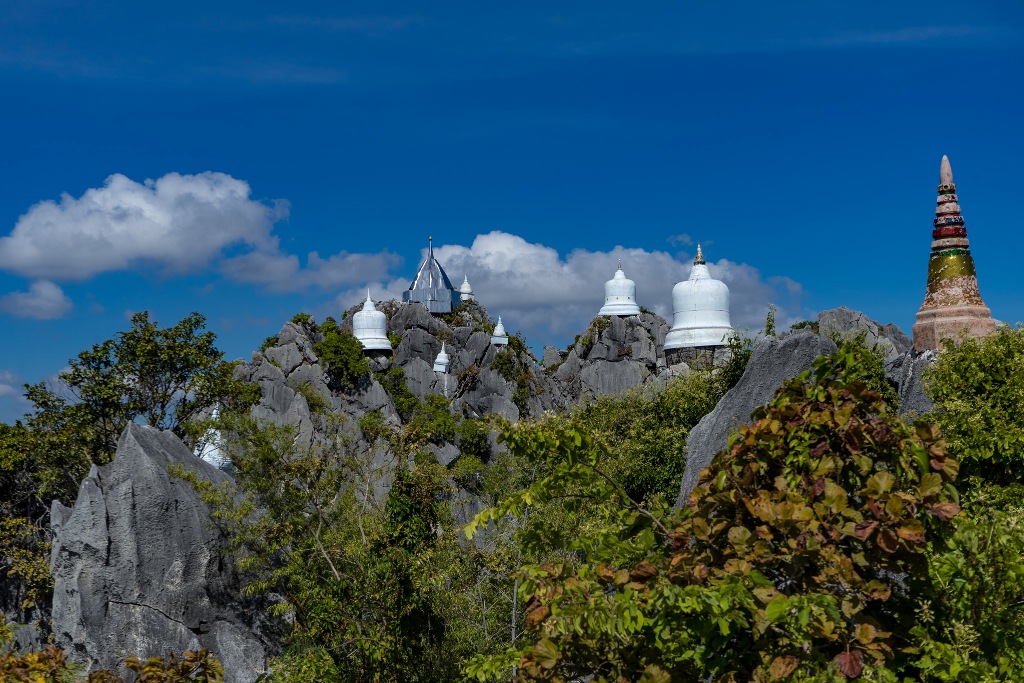
Like good Buddhist pilgrims we ring the temple bells before heading back down to the shuttle bus, which deposits us back at the foot of the mountain. There we find an unexpectedly fantastic little Thai restaurant, and after chatting to the chef it turns out he used to run a restaurant in Tunbridge Wells, England, before returning to his hometown and his family, where he now caters to tourists visiting the temple and also takes in homeless dogs, several of whom enthusiastically share our lunch.
Although we are now thoroughly ‘templed out’, we make one last stop on the way back into Lampang, at Wat Phra Chedi Sao Lang, aka ‘The Temple of Twenty Stupas’. Architectural evidence indicates that there has been a temple on the site for over a thousand years, with the current structure built in a mixture of Lanna and Burmese styles. The highlights are – of course – the courtyard filled with stupas, and a one-ton golden Buddha statue. And, in our case, the dozens of stray dogs who have made the temple their home (if you visit, the monks will appreciate gifts of dog food).
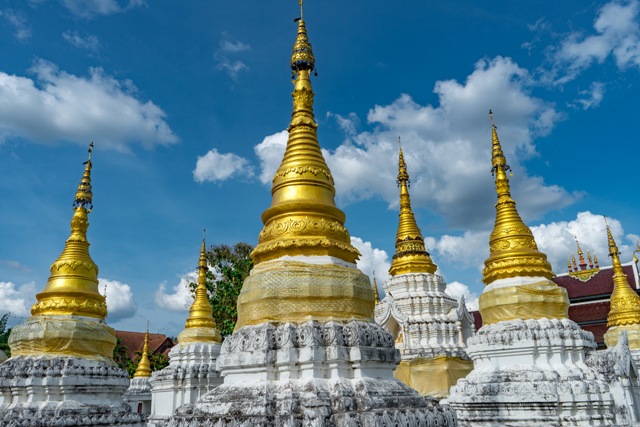
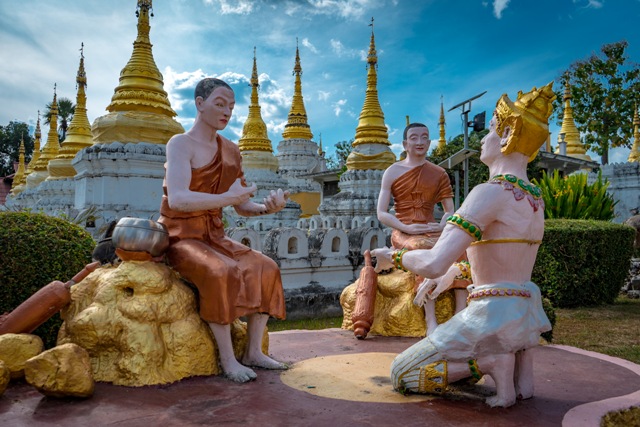
Magic Pai
The last destination on our itinerary is the idyllic mountain town of Pai. To get to Pai from Lampang, you drive to Chiang Mai and then join route 1095, the infamous ‘Vomit Road’, so called because of the 762 switchback curves it manages to cram into its 145km length. Most of the roadside stops sell Vomit Road memorabilia, and we frequently pass minivans pulled over at the side of the road with ill passengers kneeling outside. Note – this road is best done on a motorbike, or sitting in the front of a car. Not even the hardiest traveller should attempt it in the back of a minivan!
For those unaffected by motion sickness it’s a beautiful drive through forested mountains before dropping down into the Pai River Valley in Mae Hong Son province, where the town of Pai sits surrounded by mountains. The area also boasts several hot springs and we stop at a couple of them, boiling some eggs for lunch in the first and having a relaxing dip at the second. We’ve booked into a farmstay for a couple of nights and on checking in we’re shown to a delightful A-frame cabin in a beautiful garden, with an actual farm behind it (many Thai ‘farmstays’ don’t actually include farms).
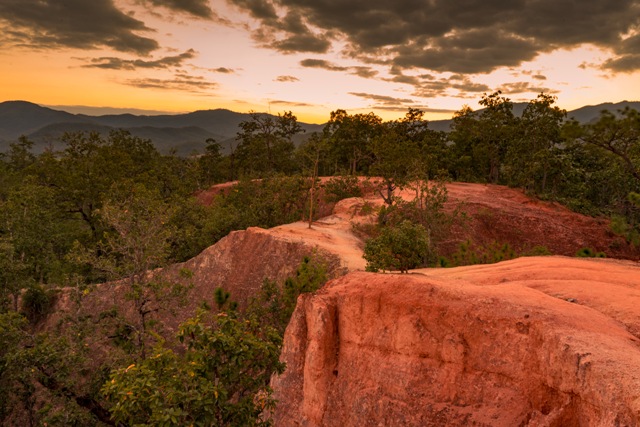
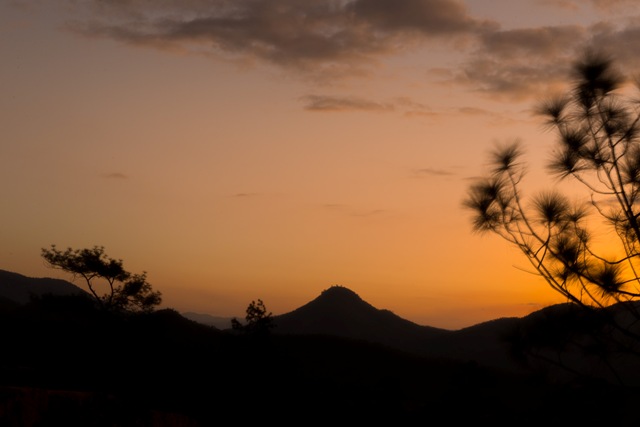
Our first stop is Pai Canyon, a beautiful red sandstone canyon on the outskirts of town and a popular spot to watch the sunset, before we head back into town. Pai is an absolute delight, popular with tourists but unspoilt by them, and particularly popular with yoga enthusiasts, artists, musicians, hippies and generally those who want to get away from it all. There are excellent bookshops, a large number of reggae bars, and plenty of excellent local craft products to buy, as well as some absolutely superb street food and plenty of craft beer bars. I head into one such place with a photographer friend who lives in Pai, where I purely by chance bump into a friend from Phuket, and a very enjoyable evening is had by all. So enjoyable we do it all over again the following evening.
In the Clouds (Part 2)
We’ve still not had enough cloud action, so we’re up again early on our first morning in Pai for the drive to Ban Jabo, one of Northern Thailand’s most reputed cloud watching spots. It’s about an hour’s drive from Pai, plus a breakfast stop in the small market town of Ban Nam Rim, and it’s well worth the drive, as THIS is the cloud viewing location we’d been dreaming of.
Ban Jabo is a hilltribe village overlooking a huge valley, and from sunrise to around 10am that valley is filled with fluffy white clouds. There’s a restaurant and coffee shop where you can sit slurping down noodles with your feet dangling over the sheer drop, and plenty of viewing platforms for taking photos, and we take hundreds. The hilltribe village also offers basic accommodation if you want to stay here, and there are a couple of more upscale resorts where you can wake up to probably the finest views in the whole of Thailand.
It’s a truly breathtaking spot and we sit there in awe for a couple of hours, until the clouds start to disperse and we head back for our last night in Pai, and the last night of our trip, for by tomorrow night we’ll be home in Bangkok.


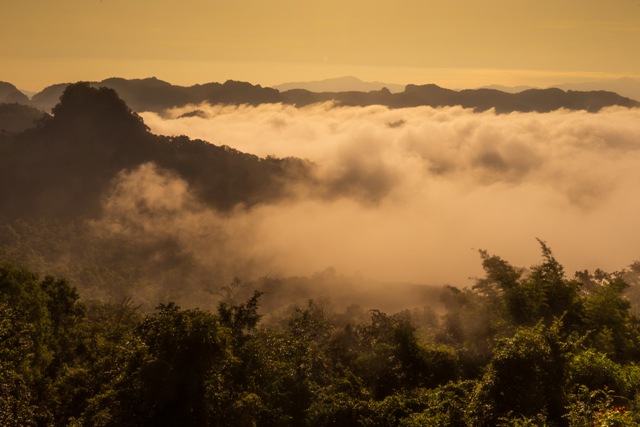
Khiri can arrange accommodation and activities in all destinations mentioned in this article. For more details, please contact sales.thailand@khiri.com

